#archetypes jung
Explore tagged Tumblr posts
Text
Know About Your Archetypes
Recurring patterns or universal symbols known as archetypes are present in the human collective unconscious. They stand for universally understood, historically pervasive human experiences, feelings, and actions. These archetypes provide a framework for mythology, narrative, and the human mind.

The Hero is an important archetype. The journey of a protagonist who embarks on a transforming mission and encounters difficulties is represented by the Hero archetype. This archetype stands for the capacity for progress, bravery, and resistance to adversity in people. The Hero's journey frequently includes a summons to action, a mentor figure, a pivotal conflict, and a return with fresh insight or a priceless gift. The Trickster is another well-known archetype. The figure who disturbs the status quo and defies authority is the Trickster archetype, who is crafty and mischievous. This archetype personifies the disorganized and erratic elements of human nature. The Trickster frequently acts as a catalyst for change and transformation, dismantling established laws and customs to introduce fresh viewpoints and opportunities.
The Wise Old Man/Woman archetype, last but not least, stands for knowledge, wisdom, and direction. Typically, an older, wiser person who possesses profound insight and understanding is shown as this archetype. The protagonist receives guidance and advice from the Wise Old Man/Woman, who also acts as a mentor or counselor. This archetype stands for the value of learning from the past, the pursuit of knowledge, and self-discovery.
Because they appeal to common human emotions and experiences, archetypes are potent storytelling devices that captivate audiences. They offer a conceptual framework for comprehending the complexity of both human nature and the environment. Storytellers and individuals can draw on the rich reservoir of universal understanding and produce narratives that connect with audiences by knowing and utilizing archetypes.
If you want to know more, You can type your queries:-
10 Benefits that you should know about:-
1. Universality: Archetypes are universal symbols and patterns that resonate with people across cultures and periods. They tap into deep, shared human experiences, making them relatable and accessible to a wide range of audiences.
2. Emotional resonance: Archetypes evoke strong emotions and connect with our subconscious. They can trigger deep-seated feelings, desires, and fears, allowing us to engage with stories or concepts profoundly.
3. Psychological insight: Archetypes provide valuable insights into the human psyche. By exploring archetypal patterns, we can better understand ourselves, our motivations, and the behaviors and motivations of others.
4. Narrative structure: Archetypes serve as a blueprint for storytelling. They offer a framework for constructing compelling narratives, creating dynamic characters, and developing coherent plotlines that captivate audiences.
5. Symbolic language: Archetypes operate through symbolism, allowing complex ideas and themes to be conveyed in a concise and impactful manner. They provide a shared symbolic language that transcends linguistic and cultural barriers.
6. Personal growth: Engaging with archetypes can lead to personal growth and self-discovery. By recognizing archetypal patterns within ourselves, we can gain insight into our strengths, weaknesses, and potential for transformation.
7. Collective identity: Archetypes contribute to the formation of collective identity and cultural cohesion. They are embedded in myths, legends, and cultural narratives, shaping our understanding of ourselves and our place in the world.
8. Creative inspiration: Archetypes inspire creativity by offering a rich source of ideas and themes. They can be used as a starting point for generating new stories, characters, and concepts, sparking the imagination and opening up new creative possibilities.
9. Psychological healing: Archetypes have therapeutic value and can be used in various forms of psychotherapy. They provide a framework for exploring and resolving psychological conflicts, facilitating healing and personal growth.
10. Transcending boundaries: Archetypes have the power to transcend boundaries of time, culture, and individual differences. They create a sense of interconnectedness and shared humanity, fostering empathy, understanding, and a sense of belonging.

If you want to know more, You can type your queries:-
#greek mythology#norse mythology#mythology and folklore#egyptian mythology#humanity#universal#symbols#archetypes#jungian archetypes#fantasy archetypes#archetypes of the collective unconscious#archetypes jung#carl jung archetypes#12 archetypes#archetype#brand archetypes#what are archetypes#feminine archetypes#archetypes explained#12 archetypes carl jung#lover archetype#brand archetype framework#how to use archetypes#embody archetypes#archetypes 101#carl jung four archetypes#face archetypes#jung archetypes#deck archetypes#the outlaw archetype
5 notes
·
View notes
Text
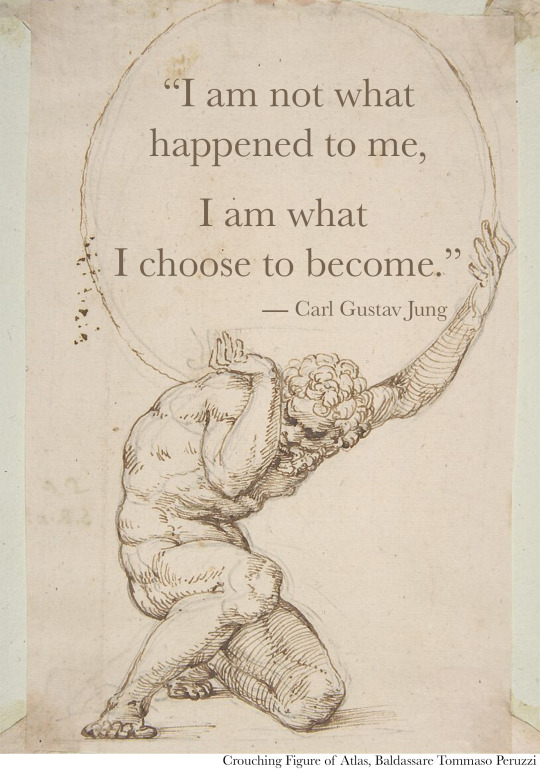
“I am not what happened to me, I am what I choose to become.” ― Carl Gustav Jung
Drawing: "Crouching Figure of Atlas" by Baldassare Tommaso Peruzzi
#albert camus#poetry#franz kafka#classical quotes#literature#booklr#quotes#classics#sylvia plath#classical literature#renissance#sandro botticelli#leonardo da vinci#michelangelo buonarroti#carl jung#archetypes#freidrich nietzsche#the will to power#thus spoke zarathustra#psychology#lit#classic literature#literary quotes#excerpts#fragments#letters#existensialism#jane austen#charlotte bronte#book quote
1K notes
·
View notes
Text
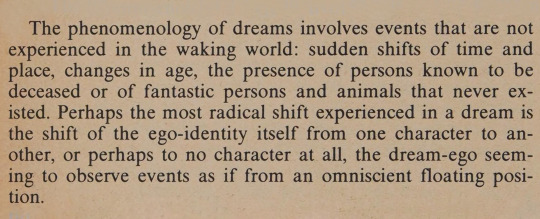
Jungian Dream Interpretation: A Handbook of Theory and Practice by James A. Hall First published: January 1, 1983
#carl jung#james a. hall#carl gustav jung#individuation#jungian epistemology#oneiroi#dreams#myths of the soul#archetypes#depth psychology#collective consciousness#shadow work#symbolic language#words#quotes#academia#dark academia#quote#lit#books#books and libraries#literature#jung#reading#quote of the day#bookworm#january 1
194 notes
·
View notes
Text
The privilege of a lifetime is to become who you truly are
- Carl Jung
#shadow self#beautiful quote#shadow work#individuation#jungian psychology#psychology quotes#psychology#jungian shadow#carl jung#jung#jungian archetypes#philosophy quotes#philosophy#witchblr#archetypes#shadow work quotes#inspiring quotes
1K notes
·
View notes
Text
Ellen Hutter and Jungian archetypes in "Nosferatu" (2024)
Persona: Victorian identity
The “conformity archetype”; created for reasons of adaptation or personal convenience. The “masks” we wear in different situations; it conceals our true selves, presenting us as someone different to who we really are.




“Everything I say sounds so childish.” "I was but a innocent child." “Keep away from me! I’m unclean!”
Ellen projecting an image of innocence, naivety, purity and modesty, and infantilizing herself before others (because Victorian society decreed women should have these characteristics). Her overbearing “protection” and worry over Thomas, to present herself as a submissive and doting Victorian wife (we only see her acting this way around Victorian characters). For instance, when she scares Anna in the middle of the night, she even sounds like an actual child (“May I stay with you tonight?”). This is her mask, her Persona, that she uses to hide her true self.
This convinces both Thomas and Anna Harding, but not Friedrich Harding, who sees her true self because they are alike (“rutting goat”; “always hungry”, "ardent nature”) and there's an unconscious recognition happening here ("Why do you hate me? You never liked me. Never."); Harding resents her because she a woman, and as such she shouldn’t have this nature, while Ellen is envious of him because he gets to display his sexuality freely, while she has to repress hers.


Ego: Her true Self
The Ego and the Self are different, but connected. Ego is both conscious (our individuality) and unconscious, and Self is the total personality of the individual. To achieve the Self it can be a lifelong process, through individuation and self-realisation. The unconscious is where the Shadow self and Anima/Animus exist.




“The honeymoon was yet too short [...] One minute more.” "He told me about you. He told me how foolish you were. How fearful. How like a child. How you fell into his arms as a swooning lily of a woman." “You could never please me as he could.”
Ellen’s sexuality and her supernatural abilities, that she seeks to repress with her Persona. Her calling out to Orlok the entire story (prologue; maiden’s token; giving him entrance to Wisburg and to the Hardings household), but since her Shadow self is not integrated, she behaves as if she is a victim of Orlok’s haunting: begging Von Franz to help her; talking about how her dreams "grow darker" and accusing Orlok of corrupting her innocence; when it's her sexual energy that conjures him and everything that happens in this story is according to her own will.
Her true self comes to the surface on some occasions: when her teenage self performs Black Magic at the prologue (necromancy); when she’s so happy at her dream of everyone dying and marrying Death (Orlok); when she creates the maiden’s token; when she passionately kisses Thomas (devouring him, almost); when she rejects God; when she displays her sexual desire for Orlok and when she taunts Thomas about his failures; and when she says she needs no salvation. This is who Ellen truly is.


And like Friedrich Harding resents Ellen, we see Ellen resenting Herr Knock ("I never liked that man. Never."). What recognition does Ellen sees in Knock? They both use Sex Magick (sexual energy) to conjure Orlok, for a start. Unlike Ellen, Knock doesn’t hide his connection nor covenant with Orlok. What Ellen claims to be her “shame”, Knock is proud of. They both reject Christianity, but Knock fully embraces Paganism.


Shadow Self: Count Orlok
When we over please others with our Persona, it creates the Shadow. This is the unknown dark side of our personality; everything we deny in ourselves (what we perceive as inferior, evil, or unacceptable) becomes part of our Shadow self.
A weak adaptation of the Shadow results in low level of personality, causing the individual to behave like a passive victim of his shadow, extremely worried with the opinion of others, a walking Persona. Those who don’t look at their Shadow directly, project them onto others: the qualities we cannot stand in others, it’s the qualities we have in ourselves and don’t wish to see (which is what is happening between Ellen, Friedrich Harding and Herr Knock in this narrative).




“It is not me. It is your nature.” "You deceive yourself."
Orlok as a monster of Ellen’s own creation by the repression of her true self: he’s the embodiment of her “devourence" and "appetite", uncontrollable lust after being repressed for so long. He’s also a representation of demonized female sexuality by Victorian society; seen as a monstrosity and a plague in need of containment; hence why she resurrected him during her sexual awakening (15 years old) and her sexuality stays connected to him after that (which she considers “her shame”).
He symbolizes free sexuality, demonized Pagan beliefs, the demonized foreigner. He and Ellen are like Dr. Jekyll and Mr. Hyde. He’s also described as very masculine, and Thomas feels emasculated by him, as we see Orlok feeding on Thomas (as Ellen herself wished she could devour him). Orlok is also the animus to Ellen’s anima. We see Ellen rejecting Orlok because he represents the parts of herself she doesn’t want to confront nor claim as her own.
And if we go to the Freudian angle of Ellen conjuring Orlok over being hurt and lonely because her father didn’t give her physical affection anymore, oh boy… and this happening during her sexual awakening? Electra Complex. It’s the total opposite of those ridiculous “Ellen’s father abused her” interpretations, because this is Ellen wanting to have sex with her father. Especially since Orlok was probably the same age as her father at the time.
Integration/Assimilation of Shadow:
Our Shadow self can be integrated through Shadow work, because this is a central part of the process to balance our psyche and of the process of individuation. As we integrate our Shadow self, we dismantle the Persona, and come closer to our true Selves. In the “Dr. Jekyll and Mr. Hyde” dynamic it has to be Dr. Jekyll (the conscious personality) to integrate the Shadow, and not the other way around (otherwise one becomes a slave to their Shadow self); and this is what we see here, as it’s Ellen who has to accept Orlok, of her own free will, and not the other way around.


“I need no salvation. My entire life I have no ill but heed my nature.” “Our spirits are one.”
At the end, Ellen accepts Orlok’s covenant of being one with him ever-eternally, which symbolizes the integration of her Shadow Self, and the dissolution of her Persona (Victorian identity), as she embraces her true self.
In this last scene we see her assimilating her Shadow, as she accepts herself completely, and her past resentment towards Friedrich Harding and Herr Knock resonates in this scene: she embraces Paganism and uses Sex Magick to break Nosferatu curse, and publically displays her sexuality and connection to Orlok to Thomas, Von Franz and Dr. Sievers. No longer shameful nor hiding: it's in the broad daylight for everyone to see.
This is a very simplified version of a broader subject; and I was waiting for someone from the psychology field to analyze this topic. The “anima/animus” is whole discussion I won’t enter because this surpasses my area.
#nosferatu 2024#Ellen Hutter 2024#count Orlok 2024#Thomas Hutter 2024#friedrich harding#Anna Harding#Herr knock#carl Jung#jungian psychology#jungian archetypes
69 notes
·
View notes
Text
꒰ ♡ ꒱Astrology and The Female Archetypes ꒰ ♡ ꒱
✧・゚: ✧・゚:✧・゚: ✧・゚:✧・゚: ✧・゚:✧・゚: ✧・゚:✧・゚: ✧・゚:✧・゚: ✧・゚:✧・゚: ✧・゚:✧・゚:
I've always been fascinated by Carl Jung's archetypes, and I thought it would be interesting to merge them with astrology. Take a look and let me know what you think—it's all in good fun, so if it doesn't quite line up, no worries!
꒰ ♡ ꒱ ˎˊ˗ˏˋ ꒰ ♡ ꒱ ˎˊ˗ˏˋ ꒰ ♡ ꒱ ˎˊ˗ˏˋ ꒰ ♡ ꒱ ˎˊ˗˗ˏˋ ꒰ ♡ ꒱ ˎˊ˗˗ˏˋ ꒰ ♡ ꒱ ˎˊ˗ˏˋ ꒰ ♡ ꒱ ˎˊ˗ˏˋ ꒰ ♡ ꒱ ˎ
The Sage

Key Traits: Wisdom, knowledge, philosophical insight, intellectual depth.
Astrological Placements and Aspects:
Sun: Typically in Sagittarius or Capricorn, emphasizing a quest for truth, higher learning, and wisdom. Sun conjunct Ascendant highlights a strong personal identity tied to wisdom.
Mercury: Often in Scorpio or Sagittarius, indicating deep thinking, insightful communication, and a probing mind. Mercury conjunct Pluto intensifies depth of thought and investigative skills.
Jupiter: Strongly placed (in Sagittarius, Pisces, or in aspect to Sun/Mercury), emphasizing expansion, optimism, and a philosophical outlook on life.
Pluto: In Scorpio, contributing to a transformative approach to knowledge, deep psychological insights, and a profound understanding of power dynamics.
Celebrity Example:
Oprah Winfrey (Sun in Aquarius, Mercury in Aquarius, Jupiter in Sagittarius)
Jane Fonda (Sun in Sagittarius, Mercury in Sagittarius, Jupiter in Capricorn)
The Mystic

Key Traits: Spiritual depth, intuition, connection to mystical realms.
Astrological Placements and Aspects:
Neptune: Strongly placed in Pisces, indicating a deep connection to spirituality, dreams, and the subconscious. Neptune conjunct Venus enhances sensitivity and mystical experiences in relationships.
Moon: Often in Pisces or Cancer, enhancing emotional sensitivity, intuitive abilities, and a deep connection to the collective unconscious.
Pluto: In Scorpio, contributing to a transformative spiritual journey, profound psychological insights, and the ability to uncover hidden truths.
Celebrity Example:
Stevie Nicks (Neptune in Scorpio, Moon in Gemini, Pluto in Leo)
Björk (Neptune in Scorpio, Moon in Sagittarius, Pluto in Virgo)
The Wise Old Woman

Key Traits: Maturity, wisdom, nurturing, emotional depth.
Astrological Placements and Aspects:
Moon: Typically in Cancer or Taurus, highlighting emotional nurturing, intuition, and connection to natural cycles. Moon trine Venus or Jupiter enhances emotional intelligence and nurturing qualities.
Mars: Often in Cancer or Capricorn, indicating protective instincts, emotional strength, and caregiving abilities. Mars in aspect to Saturn can add discipline and responsibility to nurturing roles.
Saturn: Well-placed (in Capricorn, Aquarius, or in aspect to Moon/Mars), emphasizing wisdom gained through experience, structure, and a grounded approach to life.
Celebrity Example:
Meryl Streep (Moon in Cancer, Mars in Leo, Saturn in Leo)
Judi Dench (Moon in Virgo, Mars in Cancer, Saturn in Aquarius)
The Queen

Key Traits: Leadership, sovereignty, regal presence.
Astrological Placements and Aspects:
Sun: Often in Leo or Capricorn, indicating leadership qualities, strength of character, and a sense of authority. Sun trine or sextile Saturn enhances leadership abilities and a structured approach to authority.
Venus: Strongly placed (in Taurus, Libra, or in aspect to Sun/Saturn), emphasizing grace, diplomacy, and a balanced approach to relationships.
Saturn: Well-placed (in Capricorn, Aquarius, or in aspect to Sun/Venus), highlighting discipline, responsibility, and the ability to lead with integrity and longevity.
Celebrity Example:
Queen Elizabeth II (Sun in Taurus, Venus in Taurus, Saturn in Capricorn)
Cate Blanchett (Sun in Taurus, Venus in Aries, Saturn in Pisces)
The Mother

Key Traits: Nurturing, compassion, caregiving.
Astrological Placements and Aspects:
Moon: Typically in Cancer or Taurus, emphasizing emotional nurturing, protective instincts, and a strong bond with family. Moon conjunct Fortuna enhances themes of emotional security and caregiving roles.
Mars: Often in Cancer or Virgo, indicating caretaking abilities, nurturing energy, and dedication to others’ well-being. Mars in aspect to Moon or Venus adds passion and protective instincts.
Fortuna: Well-placed (in Cancer, Taurus, or in aspect to Moon), highlighting themes of home, family, and emotional security.
Celebrity Example:
Angelina Jolie (Moon in Aries, Mars in Cancer, Fortuna in Taurus)
Michelle Obama (Moon in Pisces, Mars in Gemini, Fortuna in Cancer)
The Maiden

Key Traits: Youthfulness, innocence, new beginnings.
Astrological Placements and Aspects:
North Node: In Leo or Aries, indicating a path towards personal growth, independence, and creative expression. North Node trine Sun enhances self-expression and leadership potential.
Mercury: Often in Gemini or Virgo, enhancing communication skills, curiosity, and adaptability. Mercury conjunct Uranus adds originality and a progressive approach to learning.
Venus: Well-placed (in Libra, Taurus, or in aspect to North Node), highlighting a playful, flirtatious approach to love and relationships.
Celebrity Example:
Emma Watson (North Node in Leo, Mercury in Virgo, Venus in Virgo)
Taylor Swift (North Node in Cancer, Mercury in Sagittarius, Venus in Scorpio)
The Huntress

Key Traits: Independence, strength, courage.
Astrological Placements and Aspects:
Mars: Strongly placed (in Aries, Scorpio, or in aspect to Uranus), emphasizing assertiveness, courage, and a pioneering spirit. Mars conjunct Uranus adds a rebellious streak and innovative energy.
Uranus: Well-placed (in Aquarius, Aries, or in aspect to Mars), highlighting independence, originality, and a progressive approach to goals and challenges.
Jupiter: Can enhance optimism, exploration, and a quest for freedom and adventure.
Celebrity Example:
Serena Williams (Mars in Gemini, Uranus in Libra, Jupiter in Capricorn)
Amelia Earhart (Mars in Aries, Uranus in Gemini, Jupiter in Sagittarius)
The Lover ˗ˏˋ ꒰ ♡ ꒱ ˎˊ˗

Key Traits: Passion, emotional depth in relationships.
Astrological Placements and Aspects:
Venus: Strongly placed (in Taurus, Libra, or in aspect to Moon/Mars), indicating a love of beauty, harmony, and a deep emotional connection in relationships. Venus opposite Mars can highlight tension between desire and affection.
Moon: Well-placed (in Cancer, Pisces, or in aspect to Venus), enhancing sensitivity, empathy, and emotional receptivity.
Mars: Can contribute to passion, desire, and intensity in romantic pursuits.
Celebrity Example:
Beyoncé Knowles (Venus in Libra, Moon in Scorpio, Mars in Leo)
Marilyn Monroe (Venus in Aries, Moon in Aquarius, Mars in Leo)
Each archetype can be further explored through additional astrological traits that uniquely resonate with individuals. Feel free to explore and see what aligns best with your personality. This is all for enjoyment and entertainment, so share your thoughts—I'd love to hear what resonates with you!
#aquarius placements#astrology observations#astrology notes#astrology rants#astrology#cancer placements#sagittarius placements#aries placements#capricorn placements#leo placements#taurus placements#gemini placements#virgo placements#pisces placements#aquarius placements#libra placements#scorpio placements#carl jung#archetypes#the lover#the mother#the sage#the maiden#the queen#the huntress#The Wise Old Woman#the mystic
149 notes
·
View notes
Text

Our hands are attached to the rest of the universe. by Slonaut . Belgium . 2024
slonaut.com
#remember#art#modern art#slonaut#contemporary art#cool art#black and white#black and white art#black and white photography#yin yang#the latest#the latest art#hands#connection#soul food#soul#higher self#what is the higher self#jung#jungian psychology#jungian archetypes#jungian analysis#jungian shadow#light#god#infinity#quantum dna#oversoul#elohim#35mm
168 notes
·
View notes
Text
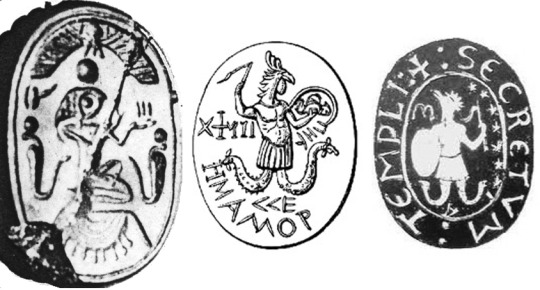
“The bird fights its way out of the egg. The egg is the world. Who would be born must first destroy a world. The bird flies to God. That God's name is Abraxas.” - Hermann Hesse, Demian.
"Fear Abraxas, who rules over the human world. Accept what he forces upon you, since he is the master of the life of this world and none can escape him." - Carl Jung, The Red Book
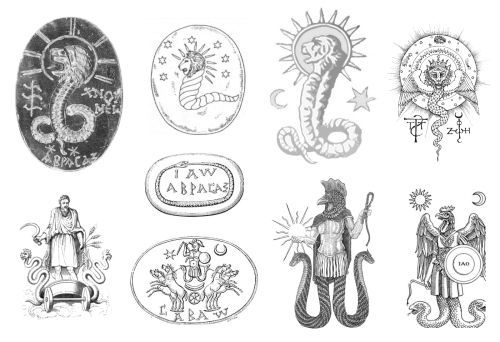
"There is a God about whom you know nothing, because men have forgotten him. We call him by his name: Abraxas. He is less definite than God or Devil. ... Abraxas is activity: nothing can resist him but the unreal ... Abraxas stands above the sun[-god] and above the devil. If the Pleroma were capable of having a being, Abraxas would be its manifestation." - Carl Jung, "2nd Sermon", Seven Sermons to the Dead
"That which is spoken by God-the-Sun is life; that which is spoken by the Devil is death; Abraxas speaketh that hallowed and accursed word, which is life and death at the same time. Abraxas begetteth truth and lying, good and evil, light and darkness in the same word and in the same act. Wherefore is Abraxas terrible." - Carl Jung, "3rd Sermon," Seven Sermons to the Dead
"Abraxas doesn't take exception to any of your thoughts or any of your dreams. Never forget that. But he will leave you once you become blameless and normal." - Hermann Hesse, Demian.
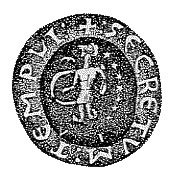

#jungian archetypes#jungian shadow#carl jung#jung#jungian psychology#mythology and folklore#mythology#abraxas#the red book#seven sermons to the dead#alchemy#alchemical#magick#occult#gnosticism#occultism
239 notes
·
View notes
Text
شيطان ,Šaiṭān
The term probably comes from Hebrew, but Arabic lexicographers derive the word from the Arabic root š-ṭ-n, meaning "to turn someone away from his original intention" or "someone who has strayed from (the path of God)".


According to field research in Syria in 2001 and 2002, the Satans do not appear as personified demons, but as abstract concepts that always try to tempt the devout Muslim to perform forbidden acts.
According to Christian ideas, the Satan of the Old Testament (OT) is the tempter of mankind. The Hebrew term "Satan" (שטן, Sin-Teth-Nun) means "adversary" or "opponent".
Christianity teaches that Satan hates people and does everything he can to lead them astray and separate them from God.


In the Tanakh, Ha-Satan ("the Satan") is a name given to various angels with whose help God tests the religious righteousness and integrity of various people. In normative Judaism, Satan is the main accuser, prosecutor, adversary, enemy in battle and the spiritual force that in Judaism is called the inclination to evil (jezer ha-rah).
Initially, Satanism was a literary movement originating in England that dealt with evil in an integrative way.
The beginnings of Satanism are seen in Manichaean-Gnostic dualism, which assumed a fundamental "equality of God and the devil". Some Gnostic groups are said to have worshipped Satan so that he would not harm them.
Satanist tendencies can be found "[u]ndeniably [...] in the occultism of the 19th century, apparently as a reaction to the materialism of this epoch, which was perceived as banal and believing in progress, and which largely rejected orthodox faith, but nevertheless demanded 'dark mysteries'".


Until the 1960s, there was no Satanist tradition of its own to which the followers of this worldview could refer. According to the American religious scholar J. Gordon Melton, all publications on the subject up to that point came exclusively from staunch opponents of Satanism, mainly conservative Christians. Although they had never attended black masses, they repeatedly described them in great detail.
That changed in 1966, when Anton Szandor LaVey founded the Church of Satan.

The content of his Satanic Bible (1968) was largely anticipated by Crowley and the Social Darwinist book Might is Right (1896), whose unknown author goes by the pseudonym Ragnar Redbeard. Satan "here is not the medieval god with the pitchfork, but the principle of 'lust' and 'unconditional freedom' - the 'peace, love and happiness'.“ This church represents an atheistic philosophy and denies the "reality of any spiritual existence"; the aspects of ritual magic it takes up are accordingly described as a "self-altering psychodrama [...] to free oneself from pent-up feelings" and "almost a substitute for psychotherapy" that contains no elements of faith.
The Church of Satan has found numerous prominent supporters and followers and has "long since gone pop." Accordingly, it is considered the Church of Satan's "'merit' to have removed Satanism's nimbus of elitism and anchored it in godless capitalism, which is why the magical competition likes to ridicule it as an occult drive-in".
The Order of Nine Angles is said to have been founded in the 1970s. It was the first group to describe itself in its writings as a representative of traditional Satanism. For the ONA, traditional Satanism goes far beyond the satisfaction of the pleasure principle and includes self-mastery, self-conquest and cosmic wisdom. His idea of Satanism is pragmatic with an emphasis on the evolution of the individual through dangerous situations.
Satanism is also presented as an extreme right-wing ideology. The anti-Christian ideology is also anti-Semitic and the social Darwinist position offers "extreme similarities" to a religiously based "fascist view of man and the world". In contrast, Fehn describes Satanists as rational free thinkers.
However, right-wing extremist and right-wing esoteric ideas have been linked to satanic content by individual groups since the 1990s. The forerunner here was the ONA, which invokes Adolf Hitler in its Mass of Heresy and describes National Socialism as "(alongside traditional Satanism) the only true heresy", which calls for a "revolution of the soul, a triumph of the will and a return of racial pride and [racial] duty".


Jung noted that the devil has “qualities which give one pause.” Being enigmatic, worldly, awkward, wily, savage, immoral, destructive, cheating, the devil, Jung said, “is something quite frightful!“
Seen through the lens of psychology, the devil has the “character of an autonomous personality,” which “… is greater than man’s consciousness and greater than his will.” As the “animal side of the libido,” the devil is “… that part of the psyche which has not been assimilated to consciousness…”. While it might seem “wonderful and ingenious” to us (think of all the amazing technological gadgets that our creativity has cooked up) Jung warned that it is simultaneously “dangerously deceptive on account of its numinous nature.”
Any archetype can fascinate us, because of its numinosity, and the devil is no different. Being autonomous, the shadow—our inner devil—can “insinuate itself” into daily life and cause all manner of mayhem. Our environmental problems are just one of many examples of this. Which brings us to consider how the devil shows up in the world.

20 notes
·
View notes
Text
What if Eleven is Will’s anima… 🧒👧

Also…

@greenfiend this goes along with your theory that Eleven will have to “merge” with Will again. And it fits with the Manifestation and Will Has Powers theories as well…
Like this is just surface-level Carl Jung theory from Wikipedia and there’s already so much…
Also, all the “Shadow” references in the show. The focus on psychology. The character Archetypes. It goes on and on…
#Byler#Will byers#el hopper#will has powers#will byers has powers#manifestation theory#carl jung#anima#anima el#jungian archetypes#my post
51 notes
·
View notes
Text

Peter Birkhäuser, Puer
Swiss, 1960
#art#peter birkhäuser#Carl Jung#Carl Jung art#jungian archetypes#jungian art#Swiss painters#paintings
18 notes
·
View notes
Text

“The meeting of two personalities is like the contact of two chemical substances: if there is any reaction, both are transformed.” ― Carl Gustav Jung
Painting: "Close-up kiss" by Graham Dean 1988
#quotes#albert camus#sylvia plath#classical quotes#franz kafka#literature#poetry#classics#classical literature#booklr#carl jung#the unconscious#archetypal psychology#psychoanalysis#psychology#lit#literary quotes#classic literature#book quote#books#reading#poem#poetic#virginia woolf#the virgin suicides#quotations#excerpts#fragments#letters
106 notes
·
View notes
Text
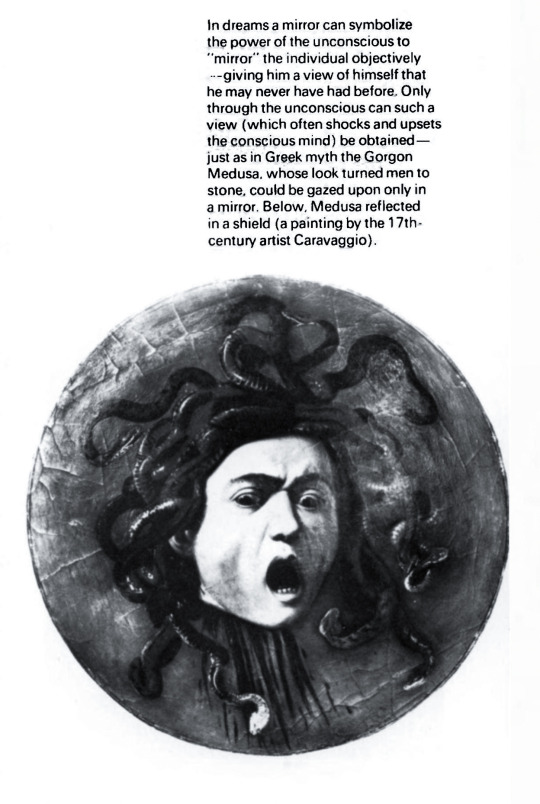
Carl Gustav Jung, Man and his Symbols First published 1964
#man and his symbols#carl jung#carl gustav jung#psyche and myth#shadow integration#self confrontation#individuation#jungian epistemology#dreams#mirror#medusa#archetypes#mythology#depth psychology#collective consciousness#symbolic language#caravaggio#greek mythology#words#quotes#academia#dark academia#quote#lit#books#books and libraries#literature#reading#quote of the day#bookworm
185 notes
·
View notes
Text

"We don't know when fairy tales began or what their origin was, but they are especially prevalent among Indo-European speakers and in the cultures with which Indo-European came in contact on the steppes".
-Brian Hayden.
Arthur Rackham's illustration for The Old Woman in the Wood.
#Brian Hayden#Arthur Rackham#grimm fairy tales#Grimm brothers#the old woman in the woods#indo-european#european tradition#steppe#traditionalism#myth#evola#carl jung#archetypes#joseph campbell#fairy tales#sacrality#sacred
159 notes
·
View notes
Text
The affective component of the dream stirs the dreamer's emotions and bars the way to associations. For the dream expresses itself in strange, often mythological images. From the treasure house of the psyche it draws forth unusual shapes and figures, for the most part numinously charged. The best way to understand them is to go back to the world of collective images contained in legends and fairytales, in myths and poetry, or in the cultural and religious symbols of human history—the world in which dragon and serpent, treasure and cave, tree and blossom, gods and demons have their home and from which they speak to us in imperishable symbols.
Jolande Jacobi, Complex/Archetype/Symbol in the Psychology of C.G. Jung
129 notes
·
View notes
Text
The 12 Archetypes as the 12 Zodiac Signs

1. Aries - The Hero
Archetype: The Hero Traits: Courageous, Bold, Determined Description: Aries embodies the Hero's journey. They are natural leaders, always ready to take on challenges and protect the weak. Their fearless and adventurous spirit drives them to overcome obstacles and inspire others with their bravery.
2. Taurus - The Lover
Archetype: The Lover Traits: Sensual, Loyal, Grounded Description: Taurus is the ultimate Lover, deeply connected to the physical world and its pleasures. They value stability and comfort, seeking to build lasting and meaningful relationships. Their appreciation for beauty and their nurturing nature make them devoted companions.
3. Gemini - The Jester
Archetype: The Jester Traits: Witty, Playful, Curious Description: Gemini thrives as the Jester, bringing joy and laughter to every situation. Their quick wit and ability to adapt make them excellent communicators and entertainers. They enjoy exploring new ideas and perspectives, often using humor to diffuse tension and engage others.
4. Cancer - The Caregiver
Archetype: The Caregiver Traits: Compassionate, Nurturing, Protective Description: Cancer represents the Caregiver, always ready to offer support and comfort. They have a deep sense of empathy and a strong desire to care for others. Their intuitive and protective nature creates a safe haven for those they love, providing emotional and physical nourishment.
5. Leo - The Ruler
Archetype: The Ruler Traits: Confident, Charismatic, Authoritative Description: Leo shines as the Ruler, with a natural ability to command attention and lead with grace. They are confident and ambitious, often taking on leadership roles with ease. Their magnetic presence and generosity inspire loyalty and admiration from those around them.
6. Virgo - The Sage
Archetype: The Sage Traits: Analytical, Wise, Humble Description: Virgo embodies the Sage, seeking knowledge and understanding through observation and analysis. They are meticulous and detail-oriented, always striving for perfection. Their quest for wisdom and their practical approach to problem-solving make them reliable guides and mentors.
7. Libra - The Idealist
Archetype: The Idealist Traits: Harmonious, Diplomatic, Fair-minded Description: Libra is the Idealist, constantly striving for balance and justice. They value harmony in relationships and have a keen sense of aesthetics. Their diplomatic nature allows them to mediate conflicts and bring people together, fostering unity and understanding.
8. Scorpio - The Magician
Archetype: The Magician Traits: Transformative, Intense, Mysterious Description: Scorpio takes on the role of the Magician, with a deep understanding of life's mysteries and a powerful ability to transform. They are passionate and resourceful, often diving into the depths of the human psyche. Their magnetic and enigmatic presence captivates and empowers others.
9. Sagittarius - The Explorer
Archetype: The Explorer Traits: Adventurous, Philosophical, Independent Description: Sagittarius is the Explorer, driven by a thirst for knowledge and a desire to experience the world. They seek freedom and adventure, always pushing the boundaries and exploring new horizons. Their optimistic and open-minded nature encourages others to embrace change and discover new possibilities.
10. Capricorn - The Creator
Archetype: The Creator Traits: Ambitious, Disciplined, Practical Description: Capricorn embodies the Creator, with a strong drive to build and achieve. They are disciplined and pragmatic, focused on their goals and willing to put in the hard work to realize their visions. Their perseverance and resourcefulness enable them to create lasting structures and achieve success.
11. Aquarius - The Visionary
Archetype: The Visionary Traits: Innovative, Progressive, Humanitarian Description: Aquarius thrives as the Visionary, with a forward-thinking approach and a commitment to social change. They are innovative and original, always seeking to improve the world around them. Their idealism and humanitarian spirit inspire others to embrace new ideas and work towards a better future.
12. Pisces - The Mystic
Archetype: The Mystic Traits: Intuitive, Compassionate, Dreamy Description: Pisces is the Mystic, deeply attuned to the spiritual and emotional realms. They have a profound sense of empathy and an ability to connect with the unseen. Their imaginative and compassionate nature allows them to heal and inspire through their dreams and artistic expressions.
#aquarius placements#astrology observations#astrology notes#astrology rants#astrology#cancer placements#sagittarius placements#aries placements#capricorn placements#leo placements#taurus placements#gemini placements#virgo placements#pisces placements#aquarius placements#libra placements#scorpio placements#carl jung#archetypes#the lover#the mother#the sage#the maiden#the queen#the huntress#The Wise Old Woman#the mystic
68 notes
·
View notes